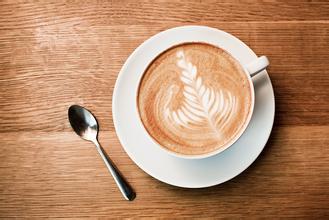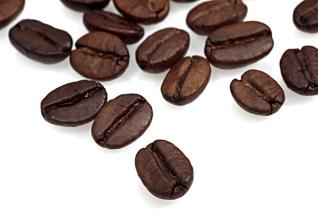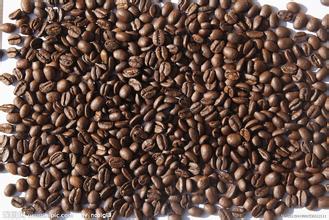Description of Flavor ratio of hand-washed Coffee beans to Water; introduction to the regional treatment of taste varieties
Description of Flavor ratio of hand-washed Coffee beans to Water; introduction to the regional treatment of taste varieties
The proportion of brewing does not decrease with the increase in the number of cups. It is fine for many coffee lovers to make coffee for one person. If you increase the number of people, you will be at a loss. Some people say that one more person will multiply by two. Some people will use less than 2 grams of powder for each additional person. That is to say, if one person brews a cup of 180ml coffee with 14 grams of powder, once it is increased to two. Only 26 grams of powder (save 2 grams of powder) can be brewed twice the amount of coffee, a total of 360 milliliters of coffee, coffee bean extractable water-soluble ingredients, up to 30% of the bean weight, some producing coffee may be even lower. Taste buds can talk, and the proportion of 1RU 13.8 without 2 grams of coffee powder is obviously thinner than that of 1RU 12.8. After ExtractMoJo test, the concentration of 1Rd 12.8 is 1.42%, which is significantly higher than 1.39% of 1RU 13.8. Therefore, under the same brewing ratio, the concentration of coffee will not increase naturally with the increase of the number of cups, that is to say, at 1:12, the concentration of one cup by hand is the same as that of two cups or three cups by hand in the same period. The amount of coffee powder will not increase because of the increase in the number of cups, and there is room to reduce the amount of coffee powder. The concentration of coffee powder can be determined by itself, unless you brew it with finer coffee powder or higher water temperature.
Comparing the two tables, it is not difficult to find that the so-called brewing of enthusiasts is just a little higher in concentration and heavier in taste.
To put it simply, under normal circumstances, one serving of powder (10 grams) is washed into about 22 parts (220 grams) of water, while enthusiasts use one part of powder (10 grams) to flush about 160,17 parts of water (160,170g water).
The picture below is the coffee brewing rate chart of SCAA. If you have the TDS gadget and find that the value of coffee is within the yellow box in the middle of the table below, the coffee wine is relatively balanced and delicious. In this table, the Abscissa is the coffee extraction rate, that is, the ratio of the coffee ingredients extracted from the coffee beans (powder) to the coffee beans (portions). The ordinate represents the ratio of the extracted coffee ingredients (special hint: this is not the weight of the coffee powder) to the total coffee liquid, also known as concentration. The conclusion of SCAA's long-term observation and research is that when the extraction rate of coffee is 180.22% and the concentration is 1.15 ~ 1.35% (that is, the range of yellow box), the taste of coffee is the best (balanced and delicious).
For example, those who like heavy flavors are often hand-flushed at 1:10 (that is, the proportion of gold cup is 1Rd. 12.5), using a higher concentration to make up for the deficiency of extraction, that is, only to extract low molecular weight and medium molecular weight sour and sweet flavors, to avoid extraction of high molecular weight bitter substances, although it can also make mellow and delicious coffee, the concentration is too high, it is not easy for most people to accept, and it is too wasteful of coffee powder to be encouraged. A good and mellow coffee can also be made at the more normal 1:12 (that is, the golden cup ratio of 1 / 14. 5).
Interestingly, there are also some light coffee lovers who like to brew by hand in a diluted proportion below 1:14, but do not underestimate these coffee lovers, whose taste buds may be sharper and can be appreciated in a variety of layers from the thinner coffee liquid. If you have to use 1:10 to brew in order to feel good enough, it may be that the sense of taste is too dull and depends on high concentrations to stimulate it.

Important Notice :
前街咖啡 FrontStreet Coffee has moved to new addredd:
FrontStreet Coffee Address: 315,Donghua East Road,GuangZhou
Tel:020 38364473
- Prev

What's the right size for the Italian coffee grinder?-what's the taste of American coffee?
What is the appropriate thickness of the espresso grinder? put the filter paper into the filter bowl, add a small amount of water, let the filter paper paste, and there is no air bubble between the filter paper and the filter bowl; grind the coffee powder and load it evenly (this process is called cloth powder. Some people think that the uplift in the middle of the powder pile can make better coffee, while others think that a hole should be dug in the middle of the powder pile.
- Next

What can be used to describe the taste characteristics of Italian coffee cappuccino
What can be used to describe the taste characteristics of Italian coffee cappuccino? 1. Cappuccino has thick foam and pops out of the cup, while latte is not needed. 2. According to the physical picture, the cup of latte is bigger than the cappuccino cup. (this increases the amount of milk) the three coffees of WBC (World barista Competition) are: espresso (espresso) and cappuccino
Related
- Beginners will see the "Coffee pull flower" guide!
- What is the difference between ice blog purified milk and ordinary milk coffee?
- Why is the Philippines the largest producer of crops in Liberia?
- For coffee extraction, should the fine powder be retained?
- How does extracted espresso fill pressed powder? How much strength does it take to press the powder?
- How to make jasmine cold extract coffee? Is the jasmine + latte good?
- Will this little toy really make the coffee taste better? How does Lily Drip affect coffee extraction?
- Will the action of slapping the filter cup also affect coffee extraction?
- What's the difference between powder-to-water ratio and powder-to-liquid ratio?
- What is the Ethiopian local species? What does it have to do with Heirloom native species?

